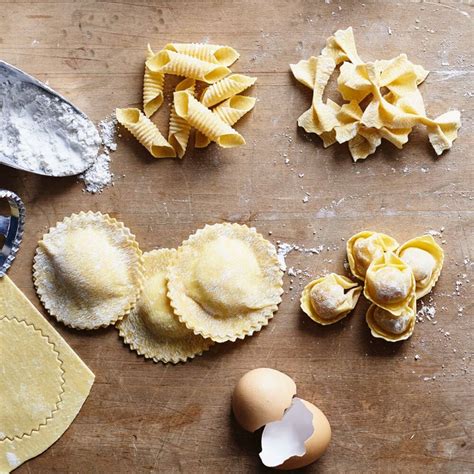Fresh Pasta Dough Recipe: A Step-by-Step Guide to Homemade Perfection
Making fresh pasta dough at home might seem daunting, but it's surprisingly simple and incredibly rewarding. This recipe will guide you through the process, resulting in perfectly textured pasta that elevates any meal. The satisfying experience of creating something delicious from scratch, plus the superior taste, makes homemade pasta a worthwhile endeavor.
Ingredients You'll Need:
This recipe yields enough dough for about 1 pound of pasta. Feel free to double or halve it depending on your needs.
- 300g (2 ½ cups) All-Purpose Flour: Using good quality flour makes a difference in the texture of your pasta. You can also experiment with different flour types, like 00 flour, for a silkier result.
- 3 Large Eggs: Room temperature eggs incorporate better into the dough.
- 1 Tablespoon Olive Oil: Adds richness and helps create a smooth, elastic dough.
- Pinch of Salt: Enhances the flavor of your pasta.
Step-by-Step Instructions:
1. The Flour Mound:
Create a mound of flour on a clean work surface. Make a well in the center, creating a small crater to hold the wet ingredients. This method ensures even hydration.
2. Combining Ingredients:
Crack the eggs into the well and add the olive oil and salt. Using a fork, gently whisk the eggs together, gradually incorporating the flour from the sides of the well.
3. Kneading the Dough:
Once the dough starts to come together, use your hands to begin kneading. This is a crucial step. Knead the dough for at least 8-10 minutes until it becomes smooth, elastic, and no longer sticky. If the dough is too sticky, add a little more flour, a tablespoon at a time. If it's too dry, add a teaspoon of water at a time.
4. Resting the Dough:
Form the dough into a ball, wrap it tightly in plastic wrap, and let it rest at room temperature for at least 30 minutes. This allows the gluten to relax, making it easier to roll and preventing cracking.
5. Rolling and Cutting:
After resting, divide the dough into smaller pieces. Using a pasta machine (or a rolling pin), roll out each piece of dough, gradually reducing the thickness setting until you achieve your desired consistency. Cut the dough into your preferred pasta shape – fettuccine, tagliatelle, or even ravioli!
6. Cooking and Serving:
Cook your fresh pasta in boiling salted water for 2-3 minutes, or until al dente. Drain well and serve immediately with your favorite sauce.
Tips for Pasta Perfection:
- Flour Power: The type of flour you use significantly impacts the texture of your pasta. Experiment to find your favorite!
- Eggcellent Eggs: Room temperature eggs are essential for proper incorporation and dough consistency.
- Kneading is Key: Proper kneading develops the gluten, resulting in a smoother, more elastic dough.
- Rest is Best: Allowing the dough to rest is crucial for easy rolling and preventing cracking.
- Don't Overcook: Fresh pasta cooks much faster than dried pasta. Be mindful of the cooking time to achieve that perfect al dente texture.
Beyond the Basics: Flavor Variations
Experiment with adding herbs or spices to your dough for unique flavor profiles. Try adding a teaspoon of dried oregano, basil, or even a pinch of red pepper flakes. The possibilities are endless! This recipe provides a foundation for your culinary creativity, allowing you to explore diverse flavors and techniques. Enjoy the process and the delicious results!
